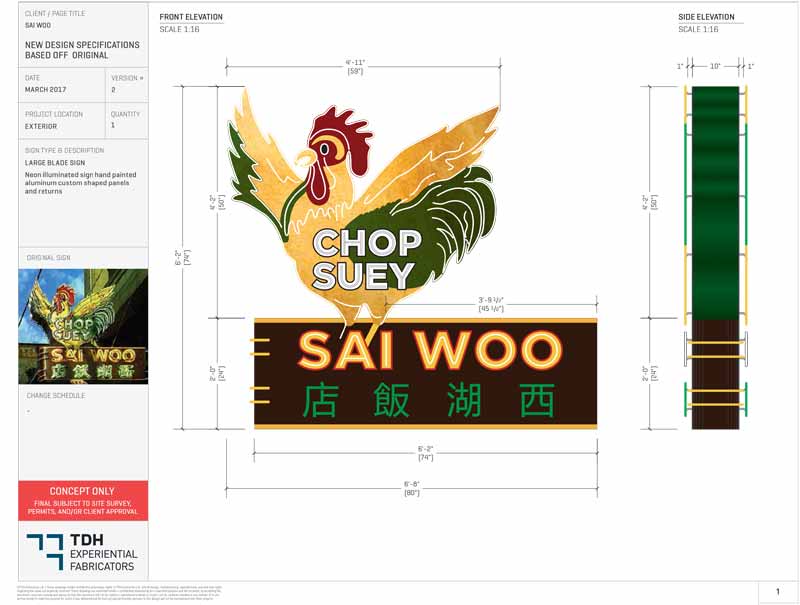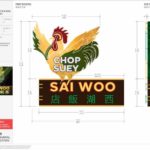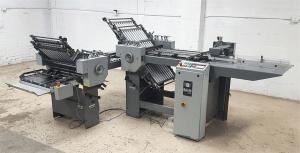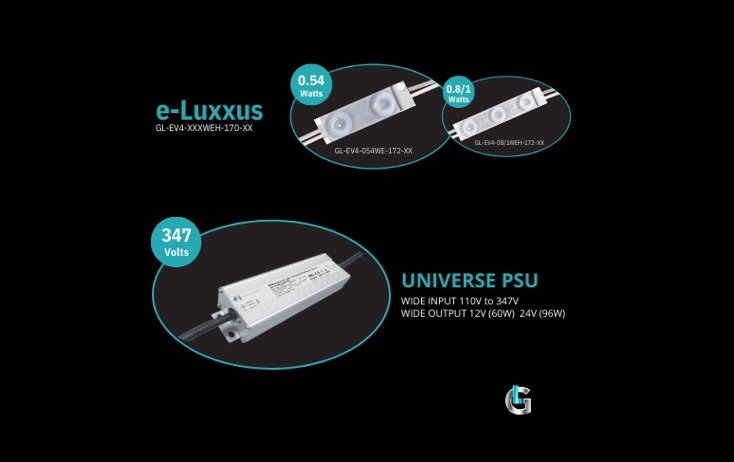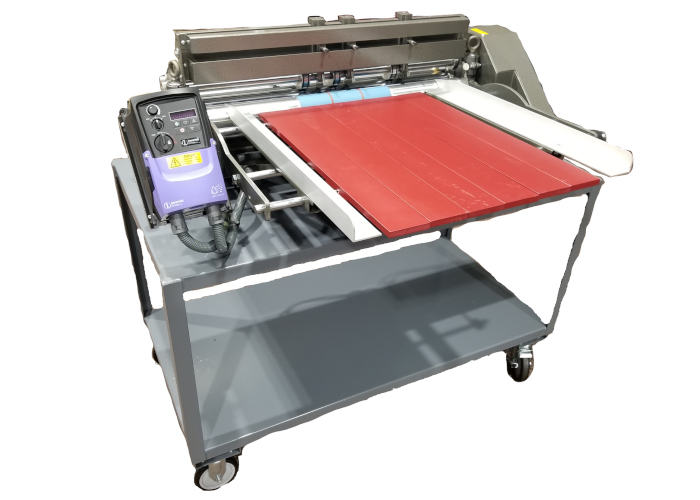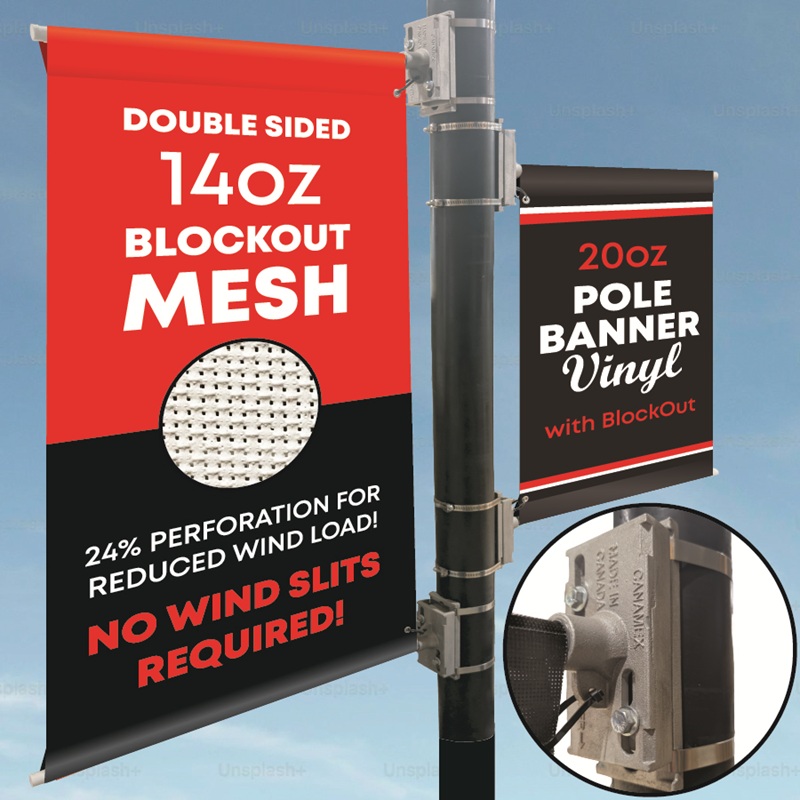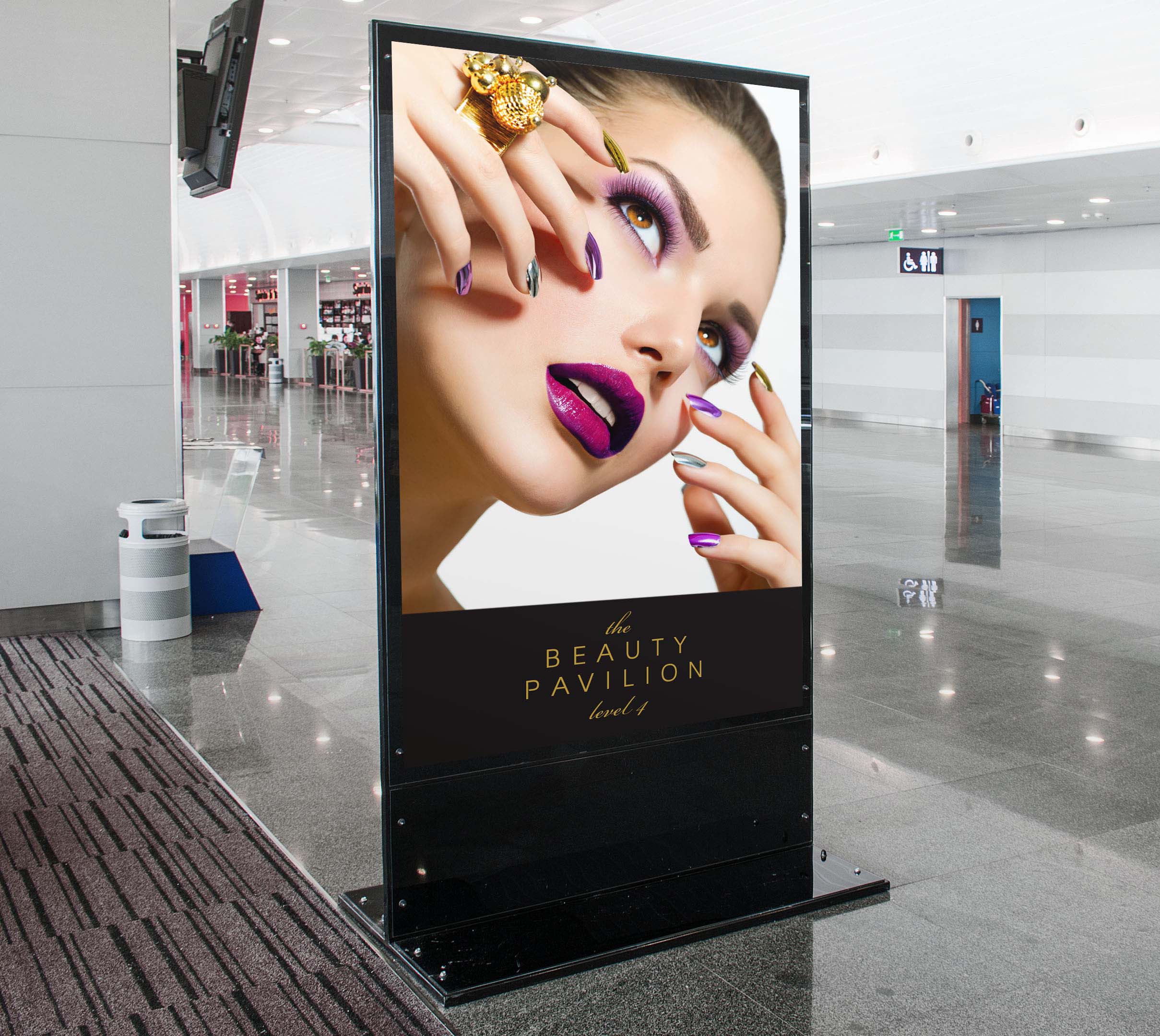Illumination: Recreating Sai Woo’s neon rooster
Building a piece of art
The process of recreating the sign, meanwhile, had begun in July 2016 with a discovery and design phase before creating engineering drawings and getting city permits.
“The city is very particular about what you can do with a sign in terms of its size and the use of neon, but they approved the design in principle,” says Pateman. “In Chinatown, any new signs have to go through the heritage board for approval.”
The fabrication and detailed finishing work took about six weeks. First, the upper shape of the rooster was constructed with an internal steel frame and sheeted with aluminum. Then, in TDH’s paint booth, it was sanded, filled and sprayed with a base coat and primer before the lettering and gradient graphics were hand-painted and airbrushed. Meanwhile, Andrew blew the glass to create the sign’s English and Chinese neon lettering.
While the overall aim was to recreate the style of a sign built in the early 1900s, TDH also relied on modern techniques.
“The original Sai Woo sign would probably have been soldered, using lead as the fusible alloy,” Troy explains. “Today, given we avoid using lead because of its health-related issues, everything is welded and riveted instead to make it structurally sound. We found the internal wiring and transformer placement was a major challenge; I would be very curious to see how they did it back in the day! We had to meticulously plan out the placement of eight transformers and the spacing of the gas tube only (GTO) cabling to minimize the chance of any future failures.”
For the artificial aging process, the entire sign was wet-sanded to flatten out the paint and rough it up. This technique helped the new paint look more like it had been exposed to sunlight over many years.
“Our team really enjoyed recreating the artistic form of a naturally aged and weathered sign,” says Troy. “For this one, we added fake neon burn marks, fake dents where it could have gotten hit by a bucket truck and fake rust where water would have pooled or dripped and collected over time. The result is very detailed and cool. It’s more of an art piece than a sign.”

